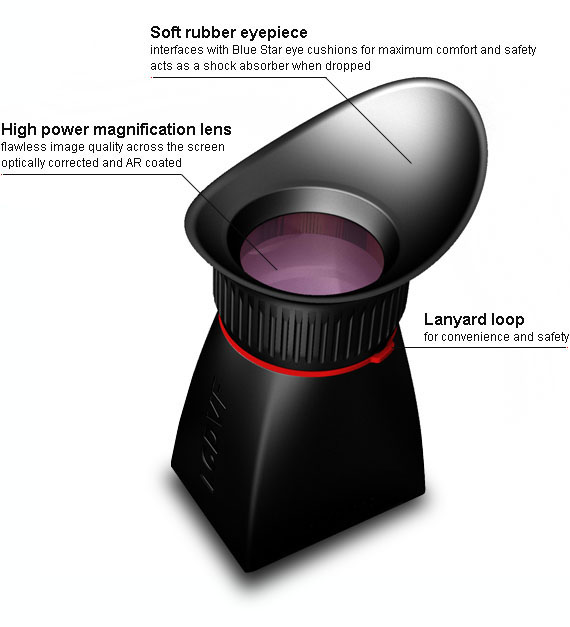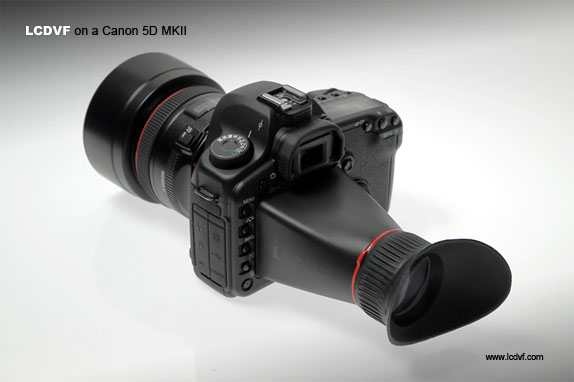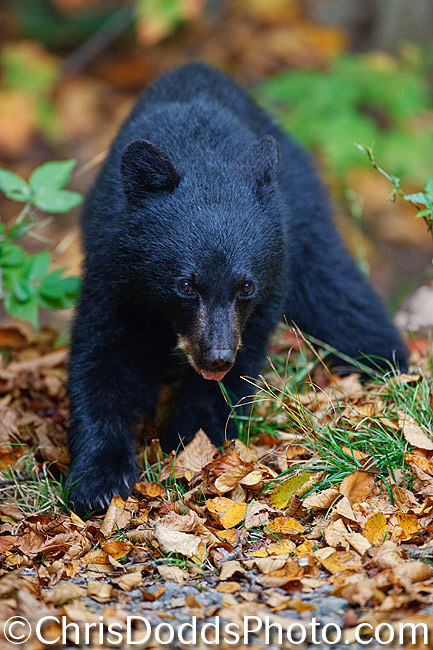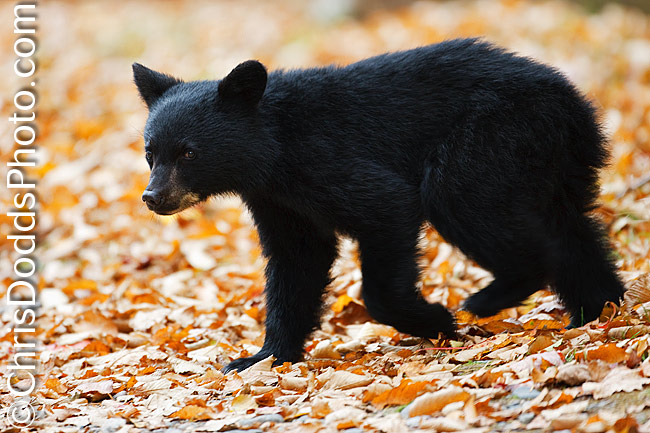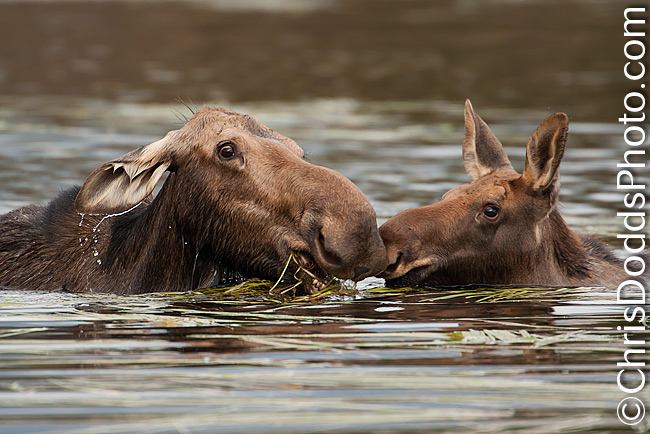
I'm thrilled to announce that E.J. Peiker will be co-leading my Moose and Fall Colors of Maine Workshop / Safari Sept. 26-30, 2011.
REGISTER HERE
Join Christopher Dodds and E.J. Peiker in Baxter State Park and surrounding areas (near Millinocket, Maine) for a truly unique workshop. Our primary focus will be the Moose that are renowned for allowing close human approach. Our trip is also timed to coincide with the amazing fall colors that illuminate Baxter State Park every fall. Though not guaranteed (Moose are wild and free, after all), We often have Moose walking so close to us that we can feel their warm breath in the cool, fall, Maine air. We have traveled far to photograph these majestic giants of the Northern forest, so we won't be spending much time indoors at the computer (like many other photography groups); this trip is all about being out there with the Moose - seeing, being and documenting their behavior during the annual Rut. Other subjects may include White-Tailed Deer, Black Bear (we photographed two cubs in 2009 SEE HERE) and various birds.
REGISTER HERE
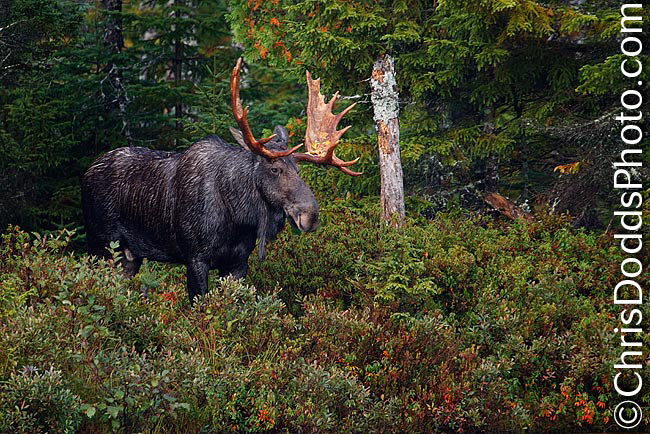 Bull Moose Giant of the Northwoods (Alces, Elan, Orignal) Baxter State Park, Maine Image Copyright ©Christopher Dodds www.chrisdoddsphoto.com All Rights Reserved. Canon EOS 1DsMKIII, 500mm F4 and 2XII tele-converter Gitzo 1325 Tripod and Wimberley Head II. ISO 400, F8 1/160s Manual. CLICK HERE TO PURCHASE A PRINT or LICENSE IMAGE FOR PUBLICATION.
Bull Moose Giant of the Northwoods (Alces, Elan, Orignal) Baxter State Park, Maine Image Copyright ©Christopher Dodds www.chrisdoddsphoto.com All Rights Reserved. Canon EOS 1DsMKIII, 500mm F4 and 2XII tele-converter Gitzo 1325 Tripod and Wimberley Head II. ISO 400, F8 1/160s Manual. CLICK HERE TO PURCHASE A PRINT or LICENSE IMAGE FOR PUBLICATION.
Like all wild and free mammal photography, there will be quiet times in the field while we wait for our subjects to appear, that's when we'll be focusing on the natural beauty of Baxter State Park, Mount Katahdin and the magical fall colors that will surround us.
REGISTER HERE
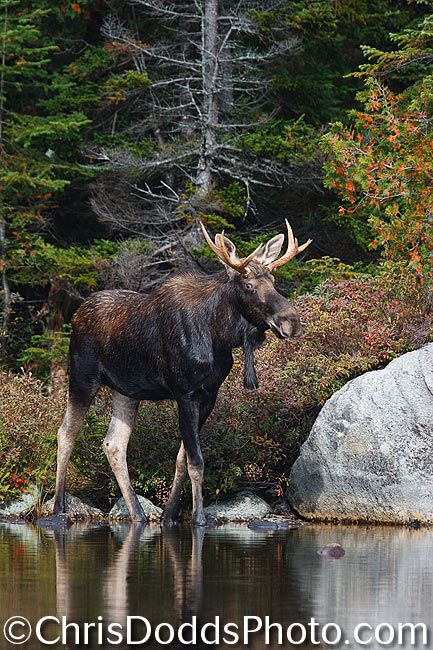 Bull Moose Vertical (Alces, Elan, Orignal) Baxter State Park, Maine Image Copyright ©Christopher Dodds www.chrisdoddsphoto.com All Rights Reserved. Canon EOS 1DsMKIII, 500mm F4 and 1.4XII tele-converter Gitzo 1325 Tripod and Wimberley Head II. ISO 500, F5.6 1/200s Manual. CLICK HERE TO PURCHASE A PRINT or LICENSE IMAGE FOR PUBLICATION.
Bull Moose Vertical (Alces, Elan, Orignal) Baxter State Park, Maine Image Copyright ©Christopher Dodds www.chrisdoddsphoto.com All Rights Reserved. Canon EOS 1DsMKIII, 500mm F4 and 1.4XII tele-converter Gitzo 1325 Tripod and Wimberley Head II. ISO 500, F5.6 1/200s Manual. CLICK HERE TO PURCHASE A PRINT or LICENSE IMAGE FOR PUBLICATION.
Who should attend:
This workshop is highly recommended for any level photographer. Whether you are completely new to nature photography, an experienced amateur, or a seasoned pro. There will be something to photograph all day long and we will have plenty of time to tailor your instruction to your abilities. The seasoned pro can take full advantage of our site and subject knowledge.

What's included....
Five full days in-the-field photographic instruction and introductory slideshow and information session on the evening before the workshop on September 25, 2011. Transportation to Baxter State Park, local transportation during the workshop, meals, snack, beverages, etc. are not included. Accomidations are not included, but we have a block of rooms reserved at a reasonable price.
Group size....
Our group will be limited to eight participants with two instructors.
REGISTER HERE
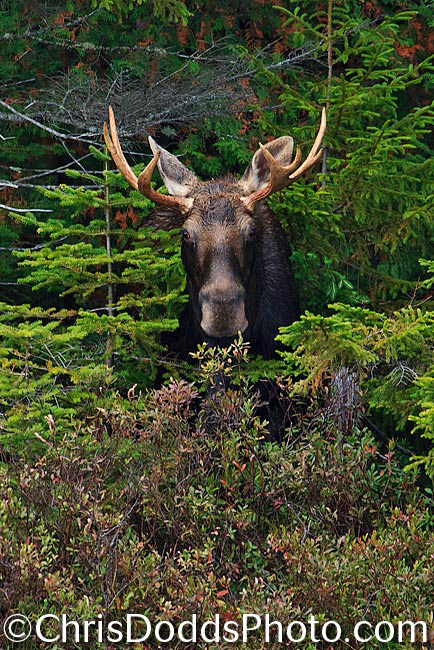 Bull Moose Vertical Portrait (Alces, Elan, Orignal) Baxter State Park, Maine ©Christopher Dodds www.chrisdoddsphoto.com All Rights Reserved. Canon EOS 1DsMKIII, 500mm F4 and 2XII tele-converter Gitzo 1325 Tripod and Wimberley Head II. ISO 400, F8 1/125s Manual. CLICK HERE TO PURCHASE A PRINT or LICENSE IMAGE FOR PUBLICATION.
Bull Moose Vertical Portrait (Alces, Elan, Orignal) Baxter State Park, Maine ©Christopher Dodds www.chrisdoddsphoto.com All Rights Reserved. Canon EOS 1DsMKIII, 500mm F4 and 2XII tele-converter Gitzo 1325 Tripod and Wimberley Head II. ISO 400, F8 1/125s Manual. CLICK HERE TO PURCHASE A PRINT or LICENSE IMAGE FOR PUBLICATION.
Price....
CAD$1,695.00 per person. Non-refundable, non-transferable Deposit of CAD$695.00 is due with booking, non-refundable, non-transferable balance of CAD$1,000.00 due July 26, 2011.
REGISTER HERE
Questions....
Feel free to email me at: chris@chrisdoddsphoto.com or call me at +1 (450) 827-1007
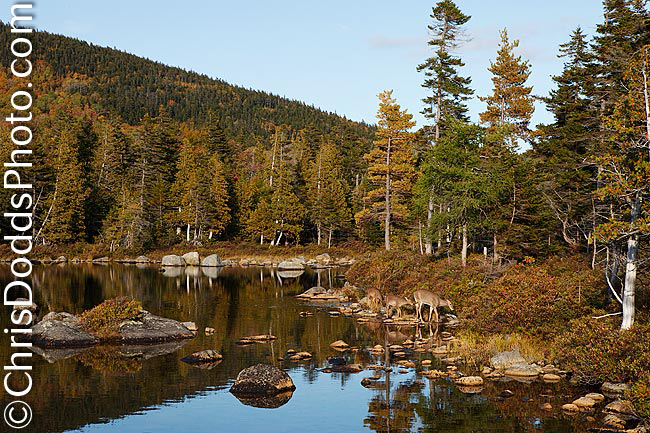 White-tailed Deer Doe & twin fawns at Sandy Stream Pond (Odocoileus virginianus, Cerf de Virginie) Sandy Stream Pond (Roaring Brook Campground), Baxter State Park, Maine, USA ©Christopher Dodds www.chrisdoddsphoto.com Canon EOS 5D Mark II, 24-70mm F2.8 @ 70mm, ISO 400, F14 1/200s Manual mode. CLICK HERE TO PURCHASE A PRINT or LICENSE IMAGE FOR PUBLICATION.
White-tailed Deer Doe & twin fawns at Sandy Stream Pond (Odocoileus virginianus, Cerf de Virginie) Sandy Stream Pond (Roaring Brook Campground), Baxter State Park, Maine, USA ©Christopher Dodds www.chrisdoddsphoto.com Canon EOS 5D Mark II, 24-70mm F2.8 @ 70mm, ISO 400, F14 1/200s Manual mode. CLICK HERE TO PURCHASE A PRINT or LICENSE IMAGE FOR PUBLICATION.
Inhabiting dense forests throughout Canada, Maine and Alaska, Moose (Alces alces) are the giants of the deer family. They may lack the grace of other deer, but they are among North America's most magnificent mammals. A bull moose crashing through the underbrush in a northern bog is a sight not soon forgotten.
Alaska boasts the largest males: they weigh some 1,800 pounds, stand seven feet tall at the shoulder, and have antlers with a spread of over six feet. In addition to a massive body and a big, overhanging muzzle, the moose is characterized by a fold of skin on the throat called the bell. Though long and spindly-looking, its legs are well suited for moving swiftly across snow, wading in water, and swimming.
During the fall rutting season, when their low, mooing calls echo through the forest, bulls battle over cows in savage antler-to-antler confrontations. By December the contests end and the bulls shed their hefty headgear.
In summer, moose wade into ponds and streams to eat aquatic plants, and in winter they browse on twigs and bark. Once exterminated in parts of their range- they were used as food by native peoples and early settlers, and their antlers have always been prized as trophies- moose have lately made quite a comeback.
REGISTER HERE
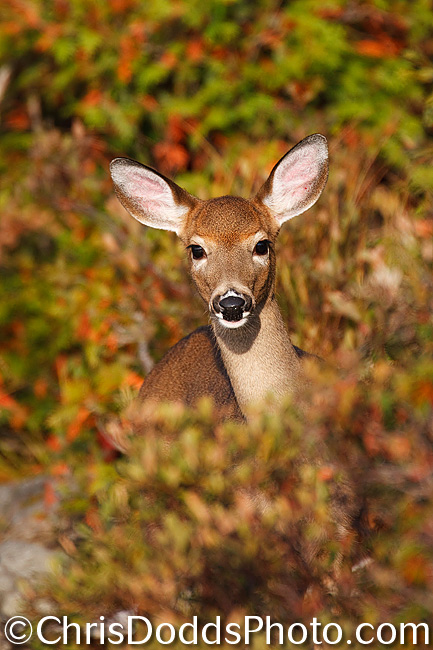 Eastern White-tailed Deer Fawn Portrait (Odocoileus virginianus, Cerf de Virginie) Sandy Stream Pond (Roaring Brook Campground), Baxter State Park, Maine, USA ©Christopher Dodds www.chrisdoddsphoto.com Canon EOS 1Ds Mark III, 500mm F4, 2X II Tele-converter Gitzo 1325 Tripod and Wimberley Head II. ISO 400, F8 1/500s Manual mode. CLICK HERE TO PURCHASE A PRINT or LICENSE IMAGE FOR PUBLICATION.
Eastern White-tailed Deer Fawn Portrait (Odocoileus virginianus, Cerf de Virginie) Sandy Stream Pond (Roaring Brook Campground), Baxter State Park, Maine, USA ©Christopher Dodds www.chrisdoddsphoto.com Canon EOS 1Ds Mark III, 500mm F4, 2X II Tele-converter Gitzo 1325 Tripod and Wimberley Head II. ISO 400, F8 1/500s Manual mode. CLICK HERE TO PURCHASE A PRINT or LICENSE IMAGE FOR PUBLICATION.

